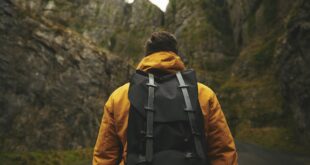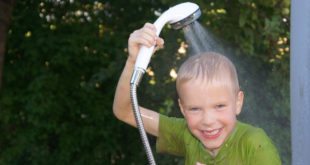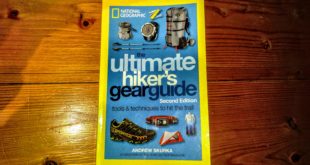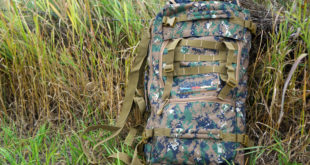Lighten your load and save on batteries with a lightweight, low powered headlamp.
Let me First just say this. I have a love / hate relationship with headlamps. They have their place in certain situations (midnight bathroom runs on the trail, Search and Rescue, early morning summit attempts), but most of the time we can minimalize their need and save a lot of weight and batteries by using some simple tricks.
Last summer I bought a Cyclops Atom low powered LED headlamp that I now use for most of my trips. I originally bought it for my kids, but now I’ll have to buy them their own!
The Cyclops is a low powered headlamp that runs on just 2 CR2016 3 volt batteries. It has a simple hinge that allows you to adjust it up and down and you just twist it to turn it on and off or to replace the batteries. The light plastic plate that it is mounted on has a fairly durable foam backing that is comfortable on the head (although I usually mount mine on my hat). The head strap only goes around the sides, but the headlamp is so light that it stays on without any problems at all. The strap itself is perfect and a decent quality elasticized fabric. All in it weighs only 0.9 oz (27 grams). To give a comparison, my Princeton Tec that I use for summit attempts and mountaineering weighs in at 3.40 oz. More important than weight though is its packability. I can keep it in the hip pocket of my backpack and still have lots of space for snacks, etc.
My Cyclops batteries (CR2016) weigh in at 4 grams a pair and because they’re so tiny they can be stowed anywhere. I’ve used them on 3 – 3 day hiking trips and the b atteries still work fine. I carry a spair set of batteries, but haven’t needed to change them yet. The one downside of the cyclops is that the LED beam isn’t super bright, but that hasn’t been a problem for me as I’ll explain below:
Battery and weight saving tips
When I hike I usually am not hiking at night. I set up camp in the afternoon or evening and then go to bed. The only time I need to stay up late is if I’m out chatting with friends. Usually though, we’re all tired and just want to get to bed early and get up with the sun. In summer time the need for a headlamp is lessened by the fact that it’s usually bright until 9 or 10 pm and sunny as of 4:30 or 5 am.
| I was able to climb all the way up to the High Camp of Huayna Potosi without using my headlamp with the light of the moon. |
Another factor is night vision. I don’t mean IR or anything like that I mean the ability for one’s eyes to adapt to the light levels. Light over-exposes the rods and the end result is that you can’t see at night. If you let them adapt over 15 to 20 minutes you’ll find your vision is incredibly good at night. On a clear night, I’ve hiked by the light of the moon and been able to see everything, including the trail well enough to not need a headlamp. Of course, I always keep it on my head in case of emergencies, but most of the time it’s not even needed.
If you do wake up in the night to answer the call of nature, your eyes are already adapted to the night and chances are you don’t need a headlamp. Keep one with you in case something goes bump in the night, but don’t rely on it. If you do need a light, it doesn’t have to be very strong. Something low powered will keep you from loosing your night vision (red lenses are even better for that) and provide for the lighting that may not be there on a cloudy night.
On a recent night time summit attempt I used the Cyclops as a secondary light strapped onto my tripod for lighting my face for videos. At 27 grams there was no real inconvenience with space or weight!
Whatever your headlamp, you can lighten your battery load by saving your headlamp for when it’s absolutely necessary. Get more miles under your belt during the day and in the morning and set up camp early enough to not need a light. Consider saving space and weight by choosing a lower powered option for a headlamp, avoiding the need for it by setting up camp before dark and try to keepit powered off for more time by letting your eyes adjust to the natural light.
Do you have any examples of this or examples of when you needed a high powered light? Leave a comment below and let us know!
*All photos taken with natural lighting.
 The Outdoor Adventure Giving you tips, tricks & recommendations to help make adventuring in the Outdoors fun, safe & exciting for you and your kids.
The Outdoor Adventure Giving you tips, tricks & recommendations to help make adventuring in the Outdoors fun, safe & exciting for you and your kids.




